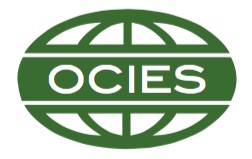Taking the sage off the stage identifying obstacles to student-centered instruction on the Thai-Myanmar border
Keywords:
international education, teacher characteristics, teacher role, culture differences, foreign countries, teacher effectiveness, Asian culture, teacher improvement, educational attitudesAbstract
Myanmar is in a time of great educational transition and reform. The education system continues to lag behind in terms of international educational standards and ranks 172nd out of the 173 countries surveyed in the Central Intelligence Agency’s educational expenditure rankings (CIA, 2011). To gain insight into the instructional practices used in Myanmar’s high schools, as well as high schools in the surrounding refugee and migrant schools on the Thai-Myanmar border, participants (N = 19) from Myanmar studying Education as a major at a Thai university responded to a mixed methods survey which asked them to reflect and quantify the common instructional practices that occurred during their high school education. It was found that the methods of learn-all-by-rote and conformity to a set standard were reinforced through the use of narrow instructional and evaluative methods. Participants believed that memorization was necessary to advance in the school system due to the nature of required standardized tests. Inadequate teacher preparation and authoritative power-distance were reported to hinder the introduction of new, student-centered instructional methods. The suppression of independent thought and authoritarian teaching style were identified as common practices in Myanmar, migrant and camp-based high schools. In order for student-centered and critical thinking approaches to be realized, this study concludes that all educational stakeholders must be involved with careful consideration of the culture, traditions and values that influence classroom practice.Downloads
Published
Issue
Section
License
The International Education Journal: Comparative Perspectives is the official journal of the Oceania Comparative and International Education Society. The IEJ, (ISSN 1443-1475), publishes a general volume bi-annually in July and December and also publishes Special Editions occasionally. It is a free, open-access scholarly journal, managed by volunteers. There are no article processing charges, or any charges to authors.
In relation to intellectual property, as of 2020, the IEJ: CP claims only first publication rights; copyright of all work published in the journal remains with the authors under Creative Commons copyright license CC-BY-ND (4.0). Author(s) retain all rights to their works, ensuring that reference to the International Education Journal: Comparative Perspectives is clearly stated on any copies made or distribution. Submissions must not involve third parties with a claim to copyright, and be the sole work of the author(s). It is the responsibility of the author(s) to secure permission to reproduce photographs, illustrations, figures or tables. Single images, tables or figures can be re-used . If more than a single image or table are to be re-used authors must attribute first publication to IEJ: CP notify the IEJ: CP Editor. Authors may also make derivative works which are subject to these limitations.
See https://creativecommons.org/licenses/by-nd/4.0/ for more detail.
Re-distributed or used material must be referenced to the International Education Journal: Comparative Perspectives.
